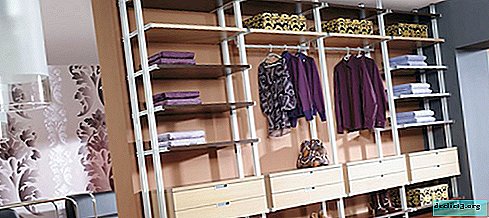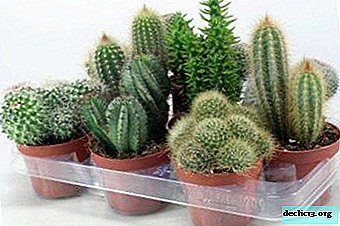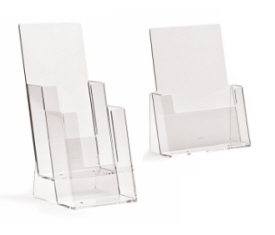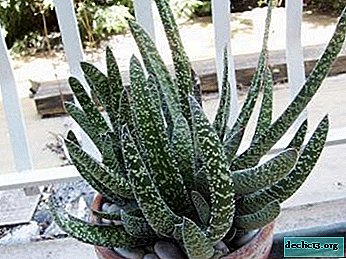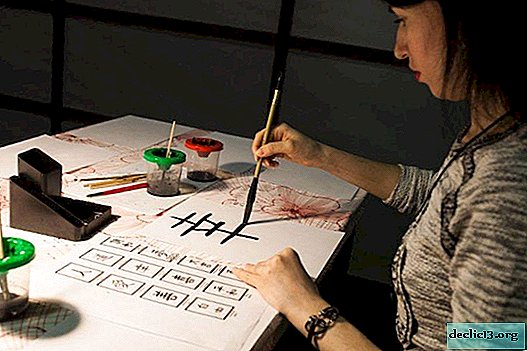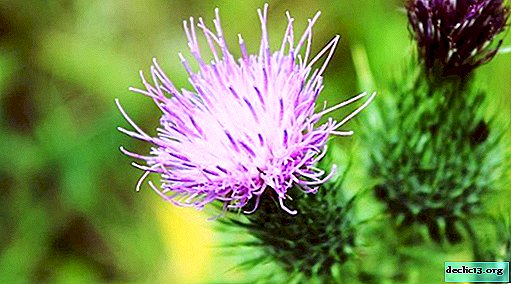When and how to pinch a petunia? Tips and tricks for care, photo plants
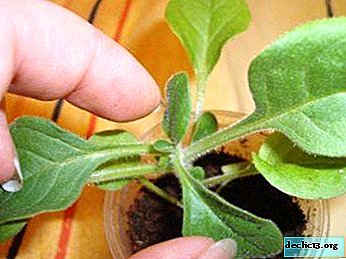
Pinching petunias is one of the most important aspects of petunia care. This procedure is necessary for lush growth and abundant flowering.
Sometimes, with the most proper and thorough care, petunia blooms weakly and sparingly. Moreover, even experienced florists. And, as it turns out, the whole thing is a pinch. This is one of the conditions for good flowering and growth.
We will talk about this later, namely: when and how to properly do this procedure. And also, what common errors can occur.
What is this plant?
Petunia is an ornamental plant in the nightshade family. It is distinguished by a variety of flower colors, unpretentiousness in care, decorativeness. Petunia is from South America. This is an annual plant with large and vibrant bell-shaped flowers. It is grown as a decoration for balconies, verandas, windows.
The leaves of the petunia are whole on short petioles. Depending on the variety, they come in various shapes and sizes. The arrangement of leaves is alternate. The stems are branched, green.
On a note. The color of the flowers of the petunia is very diverse, from white to black. The most popular among flower growers: pink, red, blue, purple shades. Sometimes flowers have bright motley drawings. And the edges of the petals can be either ordinary or fringed.Photo
See below for photos of petunias:





Topping
Pinching petunias is the removal of the upper shoots. It is produced with the aim of forming a bush so that the petunia blooms elegantly.
When do you need to do this?
The most suitable time for the first pinching is after transplanting the seedlings to a permanent residence. It can be open ground, a cache-pot or a container (you can learn about the intricacies of growing petunias in open ground here).
It is important to observe several conditions:
- After transplanting, you need to wait about two weeks so that the plant is rooted and slightly strengthened. The length of the shoots should be approximately 8 cm. If the shoots are too small, it is better to give them the opportunity to grow.
- You need to make sure that the plant "went into the stem", that is, the period of rapid growth has begun. If this does not happen, then you need to wait some more time.
- Be sure to feed the petunia with radical fertilizers and spray as necessary.
- Repeated pinching can be done in about a month. It is repeated pinching that contributes to elegant and abundant flowering.
If the plant is not pinched, it will go to growth. That is, abundant growth of green mass will occur. Moreover, growth will go in one branch. Shoots will become long and ugly, resembling whips. In this case, flowering will be sparse. Therefore, pinching can be called a mandatory procedure.
Important! You can pinch only a healthy plant! If the flower has an unhealthy appearance, is not sufficiently matured or has not gone to growth, then it is better to abstain from the procedure.Coloring Recommendations
Many people wonder how to make pinching, and especially over which sheet. For the procedure to succeed, you need to observe several rules:
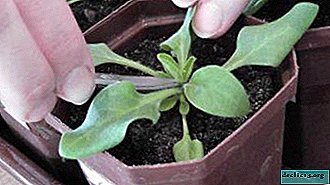 On the sheet should be at least 5 and 6 leaves.
On the sheet should be at least 5 and 6 leaves.- Pruning is done after the fifth sixth leaf on the stem. Anything above 5-6 sheets should be cut off. From a cropped place, a growth point is formed. It is from here that new shoots will grow. More information about petunia pruning rules can be found here.
- Before pinching, you need to create good conditions for the plant: properly water and feed.
- The pinching procedure must be carried out very carefully so as not to injure the plant.
- Tools are best treated so as not to infect.
- Re-pinch the petunia in a month for lush flowering.
- In order for the buds and flowers to be large, you need to use appropriate fertilizers.
- So that it bloomed elegantly, pinch the petunia several times during the season. Too long or dry shoots should be cut. The flower quickly restores decorativeness, and this will only benefit him.
After pinching, growth may slightly slow down. And the flowering move slightly in time.
Growing and care after nipping:
- Regular and proper feeding. This is one of the most important conditions. It provides both abundant flowering and the growth of green mass. This requires fertilizers containing nitrogen. You can use compositions containing the same amount of nitrogen, phosphorus and potassium, or with a predominance of nitrogen. It is nitrogen that helps build green mass.
- To provide abundant flowering you need to fertilize the flower with compounds containing potassium and phosphorus. The best option is Bona Forte and Garden of Miracles. The main thing to remember about the correct ratio of trace elements (NPK). Most often, liquid formulations are used for top dressing. Less often - dry. But there is still a type of fertilizer - long-playing. Usually they are produced in granules.
Such fertilizers are applied to the soil before planting. And then when watering, they gradually dissolve and give the soil useful substances. It is enough to add them to the ground once, and they will feed the plant all season. But there is one serious drawback - the grower cannot control the saturation of plants with fertilizers. Therefore, the use of long-playing compositions can lead to disastrous consequences.
- In addition to root dressing, the flower requires leaf dressing. This procedure is performed by spraying the flower with fertilizer dissolved in water. This is done using a spray gun. So the necessary substances (vitamins, trace elements, amino acids) enter the plant through the stem and leaves.
- Proper watering and spraying. Petunia loves plentiful, but not excessive watering. It is advisable to water it in the morning and evening. In this case, water can be slightly acidified. If the weather is hot, the plant needs regular spraying.
- Temperature mode. This will contribute to the formation of lateral shoots, as well as preventing growth in one branch. In order for the plant to have a beautiful appearance, in addition to pinching, high temperature is required during the day and low temperature at night. The best option is 15-18 degrees during the day and 5-10 degrees at night.
Possible mistakes
 A pinch of not rooted or weak bush. If the petunia bush is poorly rooted, does not grow, it looks weak with a pinch, it is better to wait a bit. If this happens, you should take care of the plant's health. Perhaps the flower is not enough, light or improper feeding. Or maybe the soil is not suitable. In any case, you need to find out the cause of the unhealthy appearance of the plant.
A pinch of not rooted or weak bush. If the petunia bush is poorly rooted, does not grow, it looks weak with a pinch, it is better to wait a bit. If this happens, you should take care of the plant's health. Perhaps the flower is not enough, light or improper feeding. Or maybe the soil is not suitable. In any case, you need to find out the cause of the unhealthy appearance of the plant.- Non-sterile instrument. If the pinching is done with untreated scissors, there is a chance of infection, which can lead to illness.
- Dumb tool. If the scissors are not sharp enough, then there is the likelihood of blood vessels being squeezed on the stem, which can lead to the death of the plant.
- If seedlings outgrew and even the first flower don't be upset. You should pinch the bush, leaving 4-6 leaves. The released flower should also be trimmed. It is not worth stinging a flower; in its place several new and larger ones will appear.
- Pinch too early. If the seedlings are less than 5 cm in size and there are less than 4-6 leaves of pinch on it, it can be harmful.
For petunias, stagnation of water in the soil is very undesirable and dangerous. The soil must be loose and pass air well.
If all aspects of growing and caring for petunia are observed, then there can be no doubt - it will be beautiful and magnificent throughout the season (about what to do with the plant after the end of the season and how to keep it for the winter, read here). In addition, you will provide the plant with great well-being. And remember - regularity is very important in care. The more thorough the care, the better the result.
Useful video
From the video you will learn how and what petunia you need to pinch:

 On the sheet should be at least 5 and 6 leaves.
On the sheet should be at least 5 and 6 leaves. A pinch of not rooted or weak bush. If the petunia bush is poorly rooted, does not grow, it looks weak with a pinch, it is better to wait a bit. If this happens, you should take care of the plant's health. Perhaps the flower is not enough, light or improper feeding. Or maybe the soil is not suitable. In any case, you need to find out the cause of the unhealthy appearance of the plant.
A pinch of not rooted or weak bush. If the petunia bush is poorly rooted, does not grow, it looks weak with a pinch, it is better to wait a bit. If this happens, you should take care of the plant's health. Perhaps the flower is not enough, light or improper feeding. Or maybe the soil is not suitable. In any case, you need to find out the cause of the unhealthy appearance of the plant.